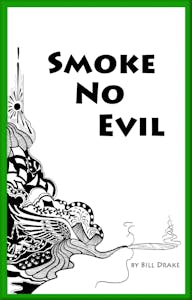This book offers a combination of new hard facts and solid (linked) peer-reviewed research to show why smoking-related sickness and death quite likely has little or nothing at all to do with tobacco itself and is perhaps largely preventable. A well-hidden cause of millions, and maybe tens of millions of smoking-related deaths over the past 50 years has been the indiscriminate and often criminal use of pesticides by the unregulated Tobacco Cartel companies.
Tobacco companies have escaped any real accountability because most people a priori believe without question that tobacco kills people who smoke it, so prosecuting tobacco companies for “knowingly producing an unreasonably dangerous product” is undercut by the question – "What do you mean, unreasonably dangerous?” Everybody knows, or at least it's the accepted conventional wisdom, that smoking tobacco kills people – so what’s unreasonably dangerous about cigarettes? Up until now, nobody seeking accountability for these criminal corporations appears to have had a good answer to the carefully implanted conventional wisdom that tobacco itself is dangerous. This book questions what "everybody knows".
The solution, covered in detail in this evidence-based book, may be that it isn’t the tobacco that’s unreasonably dangerous, it’s the products these recklessly negligent and deceitful corporations manufacture that are unreasonably dangerous. That's two entirely different sets of facts and issues from every viewpoint – technical, legal, medical and scientific. I confidently believe that the leaf of the tobacco plant has nothing at all to do with what is killing millions of smokers of the Tobacco Cartel's products.
“Smoke No Evil” uses new lab test results combined with peer-reviewed research studies to establish strong new links between the fungicide and insecticide contaminants in tobacco products and the diseases that they cause.
If the slaughter of smokers is due even in part to the tobacco industry's exemption from pesticide regulation, then there is a simple regulatory fix to a monstrous problem. Existing pesticide regulations can be applied without modification to tobacco products, which are currently exempt from pesticide regulations that apply to every other consumer product. I believe that one simple step could dramatically reduce new smoking-related disease almost immediately.
My hope is that this book opens the door to such possibilities.
As the voices of people quoted throughout this book will tell you, while people may not know the whole story of the Tobacco Cartel and its crimes against humanity, they do know the truth. Now with this book, people will know the whole story too, and maybe then true accountability for those crimes and the millions of preventable deaths can begin.
